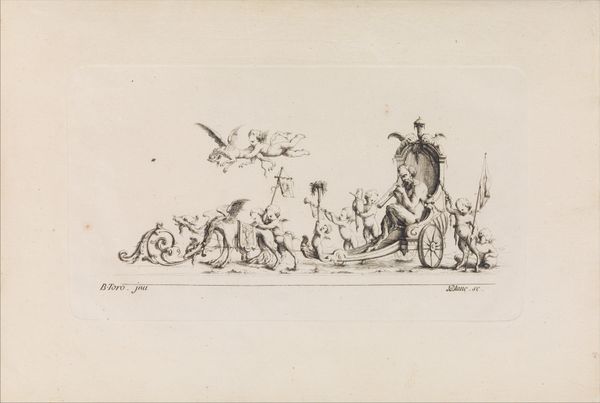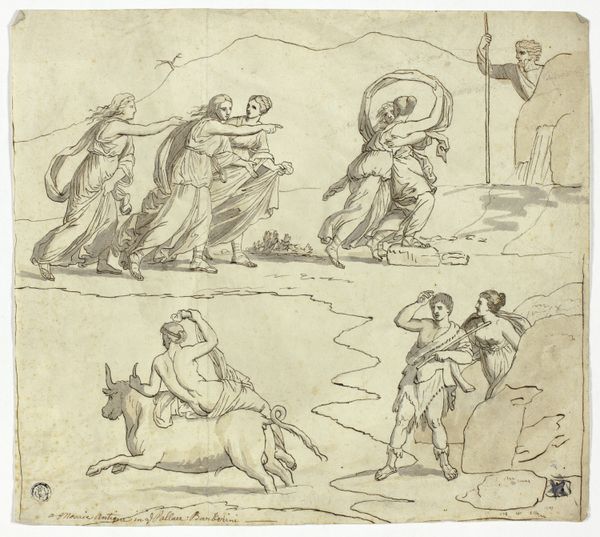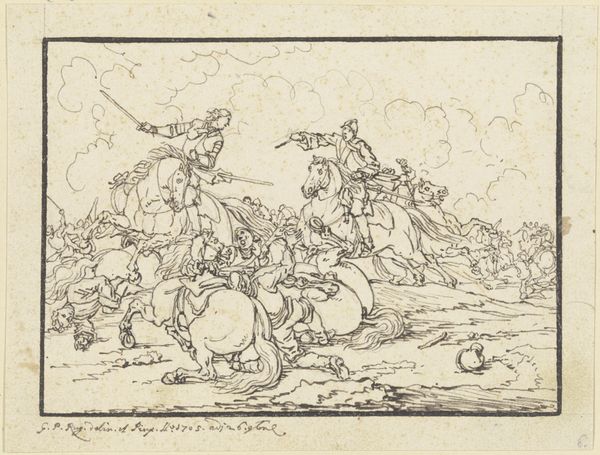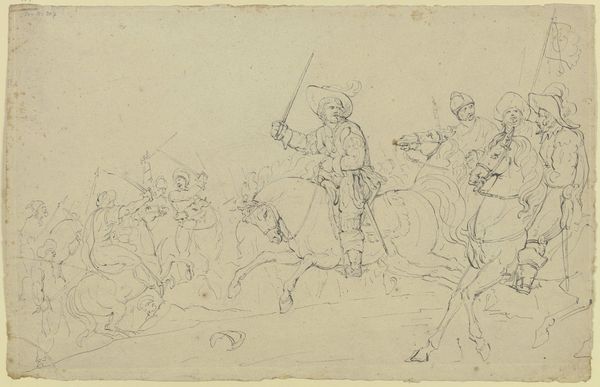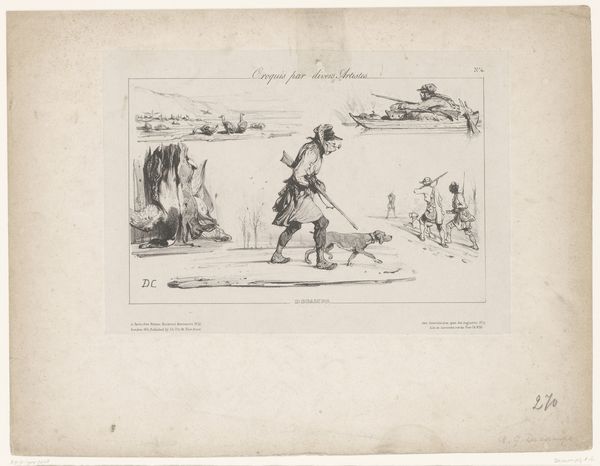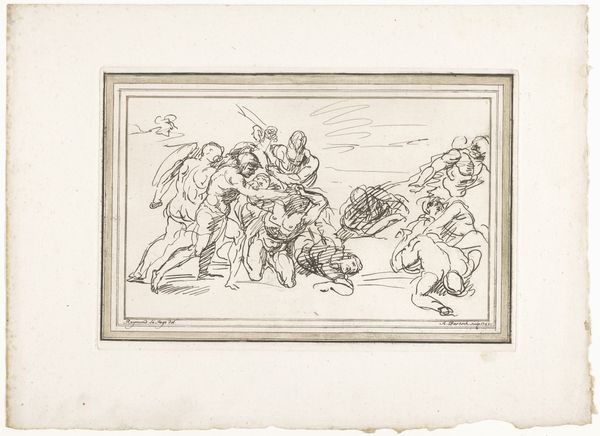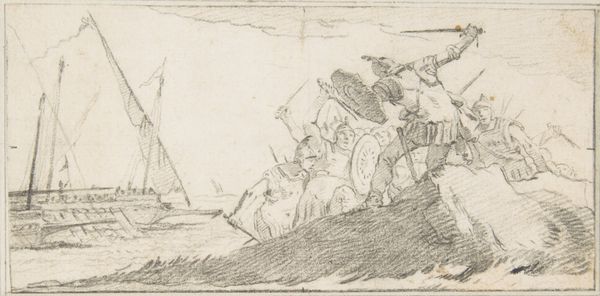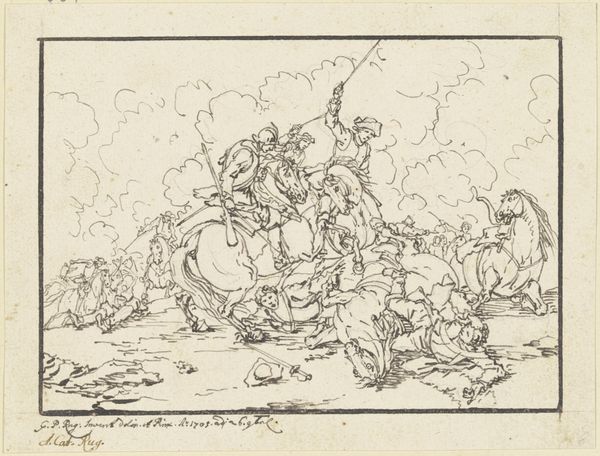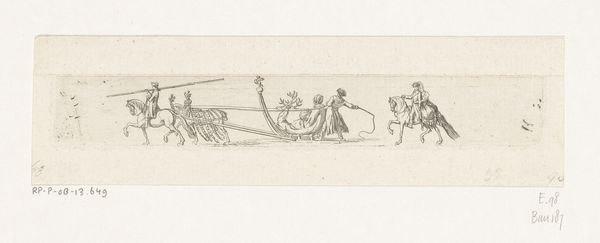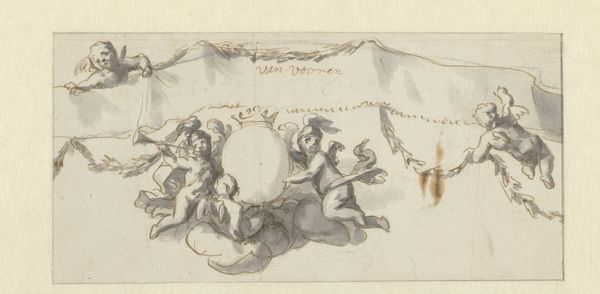
drawing, ink, pen
#
drawing
#
narrative-art
#
landscape
#
figuration
#
ink
#
pen
Dimensions: 168 mm (height) x 263 mm (width) (bladmaal)
Editor: So, this is "Strandingen på Anholt," or "Stranded on Anholt," a pen and ink drawing made between 1787 and 1790 by Nicolai Abildgaard. There's a really desolate mood to it – figures strewn on a beach next to a wrecked ship. It's also unsettling... What do you make of it? Curator: Ah, yes, a scene of profound disquiet! The spindly, almost frantic lines contribute to that feeling, don't they? It’s more than just a shipwreck, though. Look closely at the figure standing in the water with a trident. What do you suppose he represents? Perhaps not just a witness but an active force? It makes me wonder about fate, the sea’s capriciousness. And perhaps, in Abildgaard's time, a rumination on Denmark's own vulnerability. Editor: That's interesting! He almost seems to be *causing* the wreckage rather than reacting to it. I was so focused on the victims that I missed the broader implications. Does the location – Anholt, a rather isolated island – add to that sense of vulnerability? Curator: Absolutely. Islands are often used as metaphors for isolation, aren't they? Anholt, being quite remote, amplifies that feeling. Also, Abildgaard often imbued his works with dramatic intensity. It isn't just *what* happened, but *how* it makes you *feel* about what happened. Editor: I see. It's not simply reportage, but almost a stage for a bigger, more allegorical story about life, loss, and maybe a bit of hubris? Curator: Precisely. Art has this beautiful capability of embedding itself into a mirror of your own existential being, the landscape being a mirror held to society. Isn't that magical? Editor: It is. I'll definitely look at Abildgaard differently now. It seems like there's so much going on beneath the surface, hidden within that desolate scene. Thanks!
Comments
No comments
Be the first to comment and join the conversation on the ultimate creative platform.
